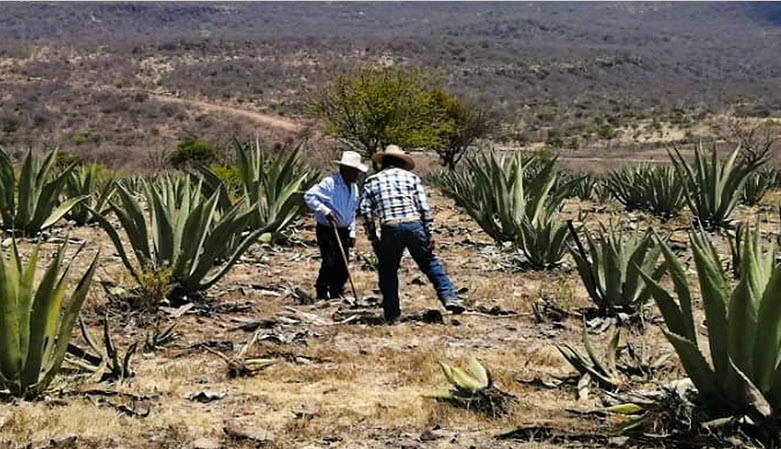- Land degradation is impacting farmlands worldwide, affecting almost 40% of the world’s population. Reversing that process and restoring these croplands and pastures to full productivity is a huge challenge facing humanity — especially as climate change-induced drought takes greater hold on arid and semiarid lands.
- In Mexico, a university-educated, small-scale peasant farmer came up with an untried innovative solution that not only restores degraded land to productivity, but also greatly enhances soil carbon storage, provides a valuable new crop, and even offers a hopeful diet for diabetics.
- The process utilizes two plants commonly found on semiarid lands that grow well under drought conditions: agave and mesquite. The two are intercropped and then the agave is fermented and mixed with the mesquite to produce an excellent, inexpensive, and very marketable fodder for grazing animals.
- The new technique is achieving success in Mexico and could be applied to global degraded lands. It is, says one expert “among the most soil regenerative schemes on Earth … deployed on degraded land, basically overgrazed and unsuitable for growing crops, with no irrigation or chemical inputs required whatsoever.”
This article was first published by Mongabay on 11 August 2021. You can read the original here.
Land degradation is recognized as one of the world’s most pressing environmental problems, with about a quarter of the world’s total land area already degraded, according to the Global Environment Facility (GEF). This adverse land use change has seriously harmed the livelihoods of more than 3 billion people, almost 40% of the world’s population, while exacerbating climate change due to the release of long-sequestered soil carbon and nitrous oxide — a powerful greenhouse gas — into the atmosphere.
Worse may lie ahead. Scientists warn that 24 billion tons of fertile soil are being lost each year, largely due to unsustainable agriculture practices. If this trend continues, they say, 95% of Earth’s land area could be degraded by 2050 — a dangerously unsustainable situation.
However, practical solutions exist, according to Gary Nabhan, a professor at the University of Arizona and one of the world’s leading experts on farming on arid land. “Over the last 50 years, most top-down rural development projects, have failed terribly,” he explains. “But there are guys trying out new ideas at the margins of conventional agriculture, which is where all lasting innovations in agriculture come from. We have to listen to them.”
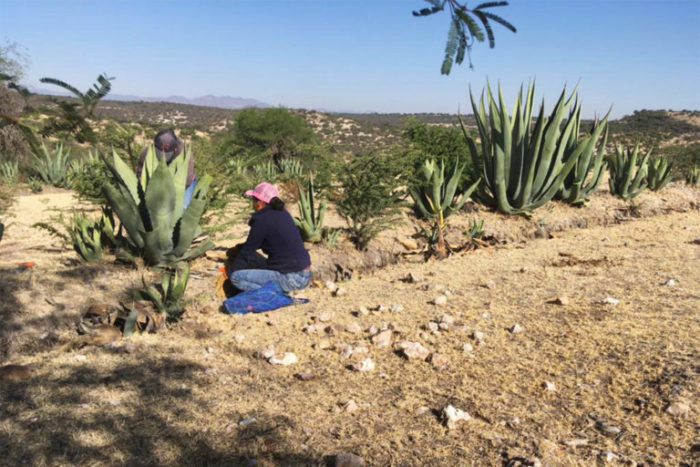
Troubled times are the mother of invention
One such solution is emerging in Guanajuato state in central Mexico. New ideas are certainly needed in this Latin American nation as it faces climate change-induced severe drought, which is currently affecting 85% of the country. In recent weeks, the rains brought some relief to Guanajuato, though many other parts of the country remain parched.
But even when precipitation eventually does spread to the rest of Mexico, prospects for small-scale farmers are not good. According to Rafael Sánchez, a water expert at the Autonomous University of Chapingo, aquifers are completely depleted. “I have no doubt that in 2022 there will be a crisis, a great crisis,” he warned, anticipating social unrest.
Worst hit by Mexico’s deepening droughts are peasant farm families, many of them working on communal land, known as ejidos. Most ejidos are already economically unviable, and for some, further drought could be the final straw.
More and more farmers could be forced to leave their land, with the men undertaking the dangerous journey north to the now-closed U.S. border in the hopes of earning cash to send home, while women, old people and children struggle on with failing farms. Without remittances from family in the U.S., many of these farms would have gone bankrupt long ago.
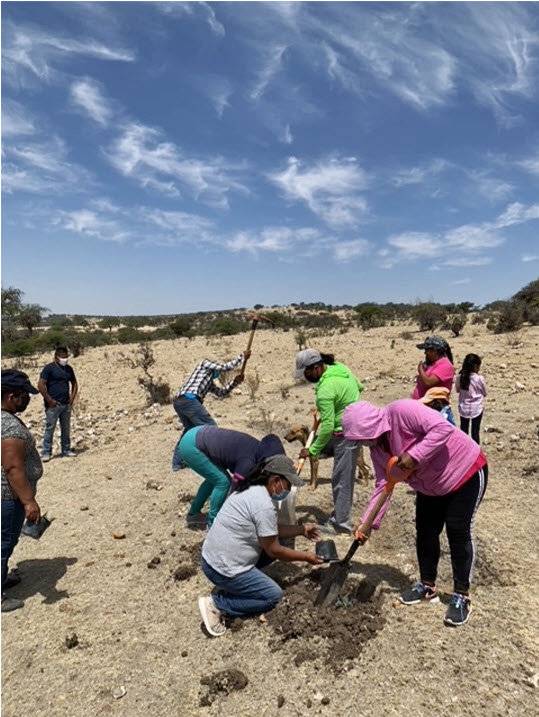
Now a new initiative offers a way forward to these families. It is the brainchild not of a high-tech company or government, but of a local farmer, José Flores Gonzalez, who, with his two brothers, runs a farm in the municipality of Luis de La Paz, which borders San Miguel de Allende. Their farm once covered 1,000 hectares (about 2,500 acres), but little by little the family was forced to sell parcels, until they were left with a tenth of its original size.
Like so many others, the three brothers sought employment away from their farm. Flores Gonzalez studied mechanical engineering and became a lecturer at a local university.
As the years passed, the land degradation and drought situation in the vast semiarid region worsened. With few options, families overgrazed their pastures, trying to squeeze out what subsistence livelihood they could — wearing out the land even more. Francisco Peyret, the San Miguel de Allende municipality environment and sustainability director, says the scale of the calamity is evident to everyone: “Some of the areas around here look as if they’re on Mars. They really have no soil.”
Growing all around: ‘The world’s cheapest fodder’
Flores Gonzalez lamented a predicament that had become desperate not only for his family but his neighbors. But he didn’t despair. Instead, he worked to take advantage of his academic training and harness the peculiar growing habits of the few hardy plants that flourish on the region’s dry, degraded lands. Eventually he found a way to restore the ecosystem and potentially revive the peasant farm community economy.
Ronnie Cummins, founder of the Organic Consumers Association — who today spends most of the year in San Miguel de Allende working with Via Orgânica, the Mexican branch of the NGO Regeneration International — remembers his sudden excitement when he realized what Flores Gonzalez had envisioned.
“We were teaching a workshop on compost” in 2019, Cummins recalls. “Afterwards a scientist, Juan Frias, came up to me and told me that three brothers had developed a revolutionary new system of intercropping agave with mesquite trees to produce ‘the world’s cheapest fodder,’” which was also able to sequester “carbon from the air.” It seemed almost too good to be true, but Flores Gonzalez had discovered something quite new.
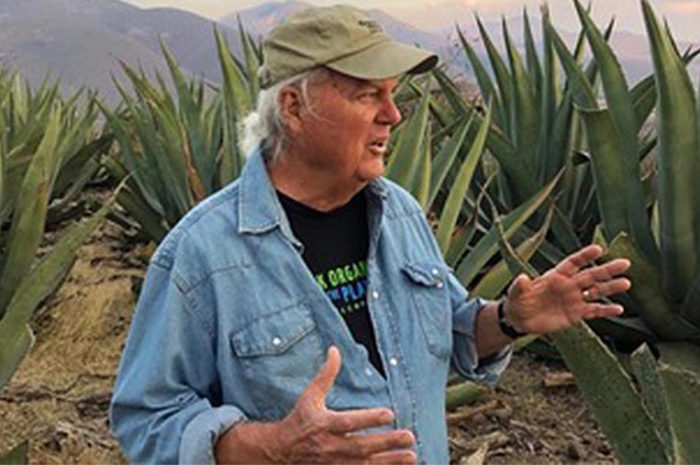
Agave and mesquite are both common native plants to Mexico’s semiarid lands. Indigenous populations have used agave maybe for millennia, making alcoholic beverages out of it, such as tequila, pulque and mescal. Mesquite pods have traditionally been used to make atole, a beverage popular during Mexico’s Day of the Dead festivities.
The two plants survive in the desert in very different ways. Agaves, known as maguey in Mexico, have shallow root systems and draw moisture directly from the air, storing it in their thick, thorny leaves, known as pencas. Unlike a lot of plants, they absorb most of their carbon dioxide at night. This means that far less water evaporates off the leaves through transpiration, allowing the plant to produce significant amounts of biomass, even under conditions of severely restricted water availability and prolonged drought.
In contrast, mesquites, the common name for several plants in the genus Prosopis, have extremely long roots and seek water deep underground. As a legume, they are one of the few plants in the desert to capture nitrogen from the air, and are able as a result to replenish soil fertility.
Agaves contain highly indigestible saponins and lectins, developed by nature to protect the plants from predators, so farmers have never been able to get their animals to readily eat the pencas. At best, they have dried them, thus losing all the precious nutrients contained in the liquid in their leaves, and then mixed the remaining plant matter with other fodder.
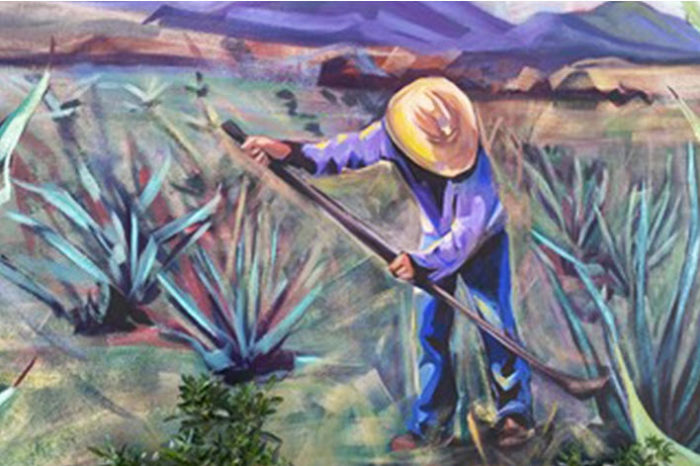
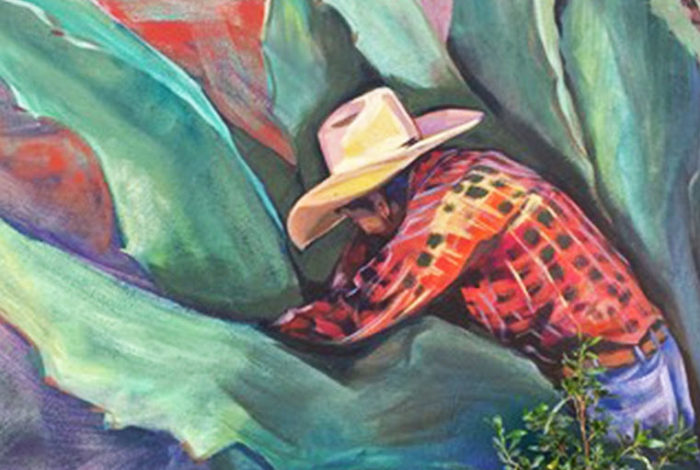
A week after meeting Frias, Cummins and others from Via Orgânica watched a group of sheep and goats gobbling down pencas and mesquite pods at Flores Gonzalez’ farm. “They were eating it like it was candy. It was amazing!” he exclaims.
When he later visited the farm, Nabhan was just as stunned. He remembers: “Before they could even open the gates, the sheep dogs ran in and [even they] started eating the fermented agave and mesquite and, once the gates were open, there was a feeding frenzy. The livestock loved it so much!”
The explanation for the extraordinary change in eating behavior is a new use for a process nearly as ancient as agriculture. Flores Gonzalez had discovered that fermentation could turn the agave pencas into a digestible fodder. “They chop up the pencas finely and put them in sealed-up containers for a month or a month and a half. The pencas ferment and become digestible,” Cummins explains. “These farmers had figured out something that no one else had ever done, including the Indigenous.”
Flores Gonzalez’ method, which he calls the Agroforestry Zamarripa System, intercrops agave with mesquite. Cummins says the two plants grow well together: “The mesquite, or other nitrogen-fixing trees such as huizache or acacia, fix the nitrogen and nutrients into the soil and the agave draws upon them in order to grow and produce significant amounts of animal forage.”
The plants don’t even need to be irrigated, an enormous advantage. Guanajuato only gets 500 millimeters (20 inches) of precipitation in an average July-October “rainy season.” That’s followed by eight months with little or no rain. Most farmers make do with the rain they can collect and store.
The plentiful supply of basic ingredients and the simplicity of the new process makes the fodder extremely cheap, costing just 5 U.S. cents per kilogram to produce (about 2 cents per pound), far cheaper than the alfalfa or hay farmers often use for forage. Importantly, the agave-mesquite process is a big step toward making small-scale peasant farming viable again in semiarid Mexico. And as a bonus, it could reduce the exodus of climate refugees streaming to the U.S.
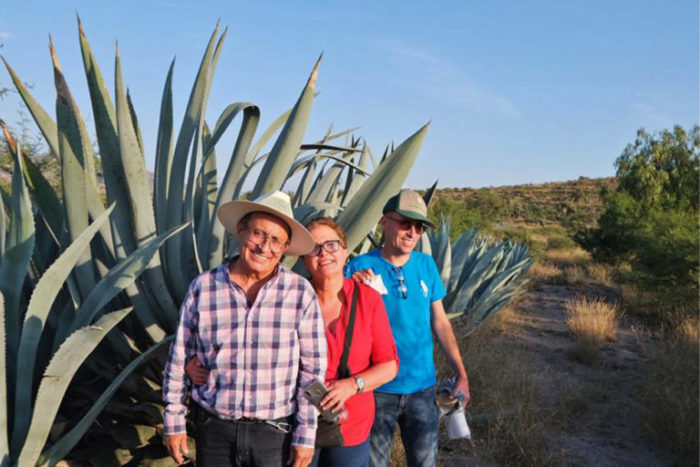
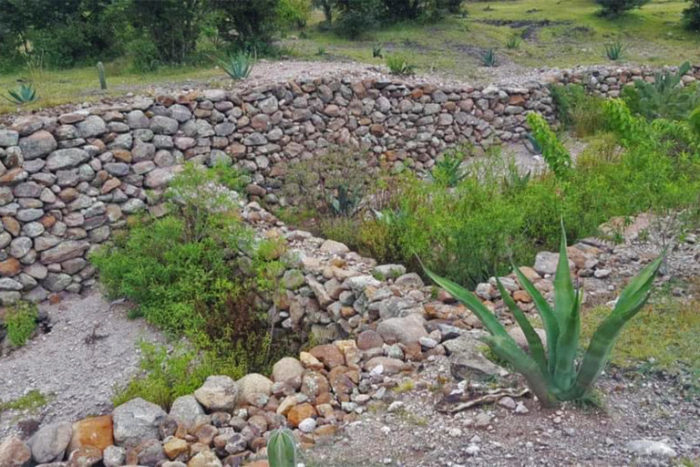
Local resistance to the new, then slow acceptance
Still, Flores Gonzalez has not found it easy to get traditional farmers to accept his innovation. “We’ve been energetically promoting the idea for four years but, unfortunately, without great success,” he laments.
Ercila Sahores, Latin American director for Via Orgânica, admits it’s hard to overcome entrenched attitudes: “Peasant farmers have believed for centuries that agave isn’t digestible.”
Also, the local pattern of land ownership doesn’t facilitate change: “Many peasants work on collective lands, where change has to be introduced through consensus and this takes time,” Sahores says.
Perhaps the biggest problem of all is that much of the local land is now so degraded that reforestation, even with agave and mesquite, is a slow, tortuous process.
However, over the last two years, with the growing involvement of Via Orgânica, other NGOs, and the San Miguel de Allende municipal government, implementation is happening.#
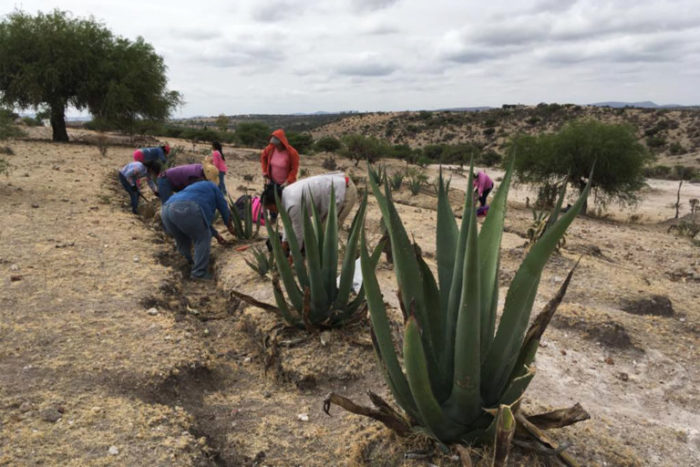
“We, the municipal government, work with communities,” Peyret explains. “We go into the ejidos, and they decide what they want to restore. They have long been aware of the urgent need to restore the land, but alone they haven’t had the resources to attempt this work.”
Once the peasant farmers communally decide which area to work on, they then commit to not grazing their animals there for several years. Peyret continues: “Agave is one of the first things we plant. It feels comfortable in the worst places and in the worst conditions, even in a bad drought, as we have had this year. If you place it on a rock where there is almost no soil, it will grow much more strongly than on arable land in a flat area. Indeed, people say ‘Make agave suffer’ for you will have a better outcome.”
The government provides the peasant farmers with enticements: temporary jobs, the chance to rebuild their vegetable gardens, the donation of native plants and trees, including agave, and the construction of water catchment systems.
The peasant farmers are also keen to grow agave, even if many of them remain skeptical of the new fermentation process, because they know that, after a decade or so of growing it, they’ll be able to produce pulque, a traditional fermented drink made by fermenting agave sap, known as aguamiel. Well before that, they can begin to experiment with the fermentation process. Acceptance is now growing.
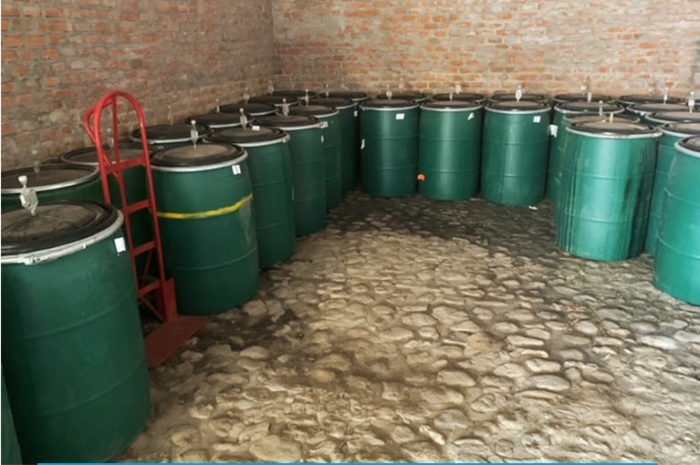
Expanding agave–mesquite fodder production
A network of NGOs, coordinated by the municipal government, has now organized the Climate Action Plan. Together, they’re combating soil erosion and promoting the Agroforestry Zamarripa System. Peyret estimates that community farmers have already restored some 1,500 hectares (3,700 acres). But that’s just a start.
One small-scale farmer, Alejandro Vasconcelos, who holds a degree in sustainable and ecological agriculture, has become a program trainer. “I have trained over 400 farmers from Guanajuato state and another 100 from other states. The vast majority are very poor with no access to irrigation.” He is very enthusiastic: “The fermentation produces fodder that costs just 1 Mexican peso per kilo. And, once the farmers realize that they can fatten their cattle in such a cheap way, they totally accept the technology.”
Cummins agrees. “Our center received the visit of 30 farmers from Tlaxcala [another central Mexican state]. As soon as they saw animals eating the chopped-up pencas, it was as if a lightbulb had been turned on. The next day they ordered five [fermentation] machines [from Flores Gonzalez]. When they realized there was going to be a delay, they ordered another machine from the tequila industry and modified the blades [for use with agave]. Then they started giving the fodder to their donkeys, sheep and goats. With great success.”
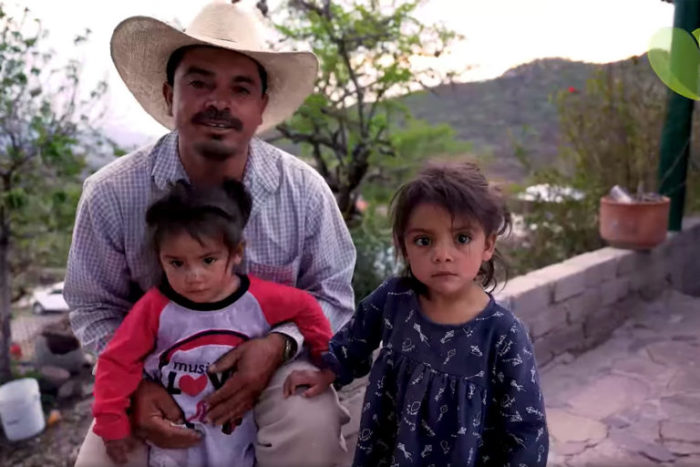
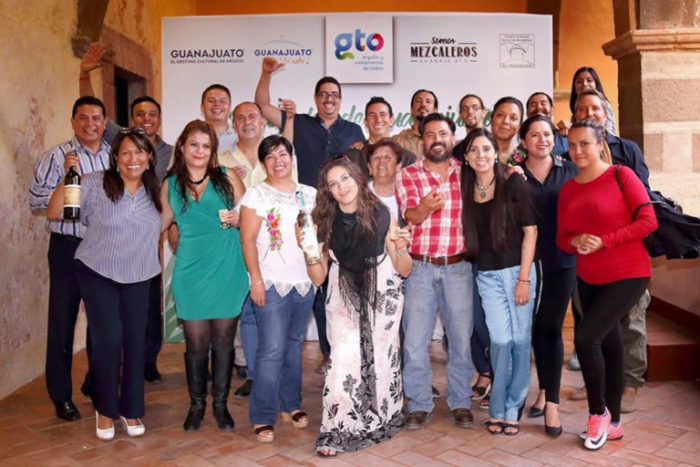
Via Orgânica expects that farmers can branch out over the long term. “Meat from animals reared on the pencas can be certified as organic and biodynamic,” Cummins explains. “Organic lamb can command a high price. And then there’s collagen, bone broth, and so on.” A bright future beckons, if the initiative can become established in this bone-dry land.
The effort brings other significant benefits, though not ones that bring such quick returns to farmers. One bonus is agave’s capacity to sequester carbon. According to Cummins, agave-based agroforestry, with 2,000 agaves per hectare, can store about 73.6 tons of carbon aboveground over a 10-year period, not counting the carbon stored by companion trees or shrubs such as mesquites and acacias.
He has made other exciting, far-reaching calculations: “This system has the capacity to sequester 100% of Mexico’s current [annual] greenhouse gas emissions (590 million tons of CO2) if deployed on approximately 1.1% or 2.2 million hectares (5.4 million acres) of the nation’s total land mass.” It is, he says, “among the most soil regenerative schemes on Earth, especially considering the fact that it can be deployed on degraded land, basically overgrazed and unsuitable for growing crops, with no irrigation or chemical inputs required whatsoever.”
Nabhan points up another benefit. “Mexico now has the highest rate of late onset diabetes of any country in the world, and childhood obesity will mean even higher rates in the future,” he says. Agave and mesquite could be part of the solution. They contain a chemical called inulin, which promotes digestive health by serving as a prebiotic that aids good gut bacteria, he says.
“You not only have a cheap and nutritious animal food, but also a way of tackling diabetes,” concludes Nabhan. This could save Mexico’s health service millions of dollars, he says.
Nabhan notes that peasant farming in Mexico has been in decline for more than a half century. “To see the chance of renewal is almost like a miracle,” he exclaims.
The potential is so great for the agave-mesquite fermentation process that it is already being transplanted into another region and nation wracked by drought: just north of the Mexico-U.S. border, in the state of Arizona. But Nabhan guesses that the scheme will advance more quickly in Mexico: “If necessity and hunger are the mother of invention, Ronnie and the Zamarippa Agave Agroforestry System have pressures working on their side. People need an alternative because they can’t farm or ranch as they did in the past. What they are proposing is really one of the only ways out of this dilemma.”
Cummins believes that Flores Gonzalez’ Agroforestry Zamarripa System could be applied in many other parts of the world. “We think agroforestry is at the cutting edge for agriculture regeneration. About 40% of the world’s terrain is arid or semiarid and different varieties of agave and nitrogen-fixing native trees are already growing in half of these areas. The possibilities are immense.” With options for combating soil degradation in short supply, many farmers and nations will be following the Guanajuato experiment with great interest.
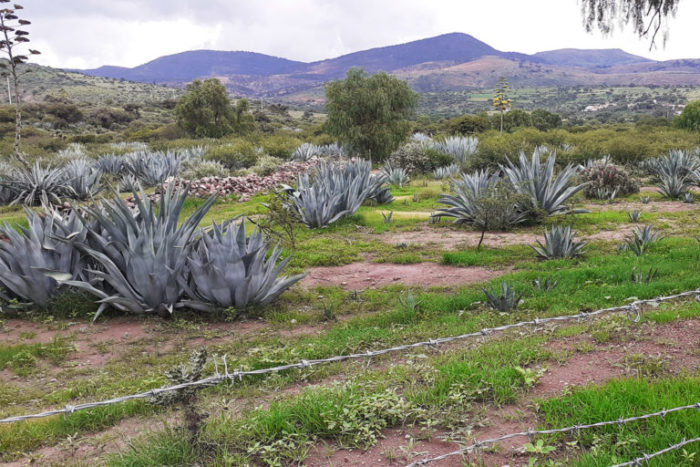
Banner image: Once the degraded land has made the first timid steps toward recuperation, it is planted with agave, one of the few plants that will flourish in such barren soil — and the plant will begin to replenish its fertility. Image courtesy of Alejandro Vasconcelos.

